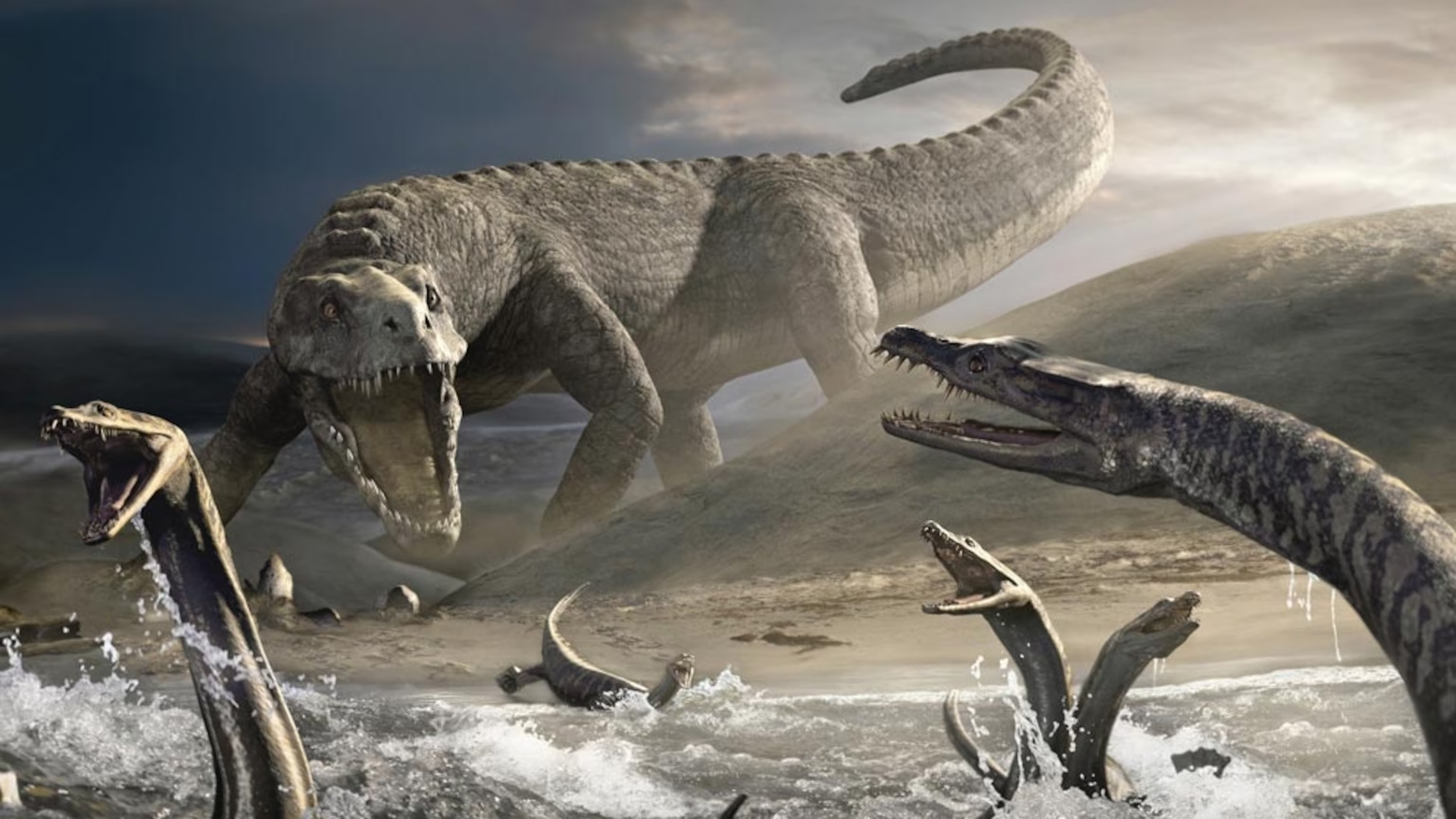
Stepping back in time to the Triassic Period, we uncover a world vastly different from our own. Triassic Period facts reveal a time of dramatic transitions and fascinating creatures, marking the dawn of the dinosaurs. Spanning from about 252 to 201 million years ago, this era set the stage for the rise of reptiles and the eventual dominance of dinosaurs. With continents fused together into the supercontinent Pangaea, climates varied from moist to arid, shaping diverse ecosystems. From the first dinosaurs to the evolution of the earliest mammals and flowering plants, the Triassic Period was a time of recovery and new beginnings after the Permian mass extinction. Let's journey back to this pivotal era in Earth's history, uncovering the mysteries and marvels that defined the Triassic landscape.
The Triassic Period: A Time of Transition
The Triassic Period, spanning from about 252 to 201 million years ago, marked a significant era in Earth's history. It was a time of recovery and transformation following the largest mass extinction event. Here are some fascinating facts about this pivotal period.
-
The Triassic Period followed the Permian-Triassic extinction event, which wiped out approximately 96% of marine species and 70% of terrestrial vertebrate species.
-
This period is divided into three epochs: Early Triassic, Middle Triassic, and Late Triassic, each characterized by unique climatic and biological changes.
Climate and Geography of the Triassic Period
The Earth's climate and geography during the Triassic Period were vastly different from today. Understanding these differences helps us appreciate the dynamic nature of our planet.
-
During the Triassic, all the continents were joined together in a supercontinent called Pangaea, which began to break apart towards the end of the period.
-
The climate was generally hot and dry, with vast deserts covering much of the interior of Pangaea.
-
There were no polar ice caps during the Triassic, leading to higher sea levels and warmer global temperatures.
Flora and Fauna of the Triassic Period
Life during the Triassic Period was diverse and evolving. This era saw the emergence of many new species and the recovery of ecosystems.
-
The first dinosaurs appeared in the Late Triassic, marking the beginning of the age of dinosaurs.
-
Early mammals also made their debut during this period, evolving from reptile-like ancestors called synapsids.
-
Coniferous trees dominated the landscape, along with ferns and cycads, which were common in the Triassic forests.
Marine Life in the Triassic Period
The oceans of the Triassic Period were teeming with life, recovering from the mass extinction event at the end of the Permian.
-
Marine reptiles like ichthyosaurs and plesiosaurs began to dominate the seas, showcasing incredible adaptations for aquatic life.
-
Ammonites, a type of mollusk, flourished during the Triassic and are often used as index fossils to date rock layers from this period.
-
Coral reefs began to re-establish themselves, providing habitats for a variety of marine organisms.
Significant Events and Discoveries
The Triassic Period was marked by several significant events and discoveries that have shaped our understanding of Earth's history.
-
The end of the Triassic Period was marked by another mass extinction event, which paved the way for the dominance of dinosaurs in the Jurassic Period.
-
Fossils from the Triassic Period have been found on every continent, providing valuable insights into the life and environment of that time.
-
The discovery of the first dinosaur fossils, such as those of Coelophysis, has helped scientists understand the early evolution of these iconic creatures.
-
The Triassic Period saw the first appearance of pterosaurs, the flying reptiles that would later become more prominent in the Jurassic and Cretaceous periods.
A Look Back at the Triassic
Diving into the Triassic Period has been like opening a book to the first chapter of the age of dinosaurs. We've journeyed through time, uncovering the secrets of a world that laid the foundation for the giants of the Jurassic. From the rise of the first true dinosaurs to the lush landscapes that supported such diverse life, this era was a pivotal moment in Earth's history. Understanding the Triassic isn't just about the past; it's about piecing together the puzzle of our planet's evolutionary journey. As we close this chapter, let's carry forward the awe and curiosity that the Triassic inspires. It's a reminder of how dynamic our world is and how much there's still to discover. So, keep that spirit of exploration alive, because history, especially prehistoric, is full of surprises waiting to be unearthed.
Was this page helpful?
Our commitment to delivering trustworthy and engaging content is at the heart of what we do. Each fact on our site is contributed by real users like you, bringing a wealth of diverse insights and information. To ensure the highest standards of accuracy and reliability, our dedicated editors meticulously review each submission. This process guarantees that the facts we share are not only fascinating but also credible. Trust in our commitment to quality and authenticity as you explore and learn with us.


